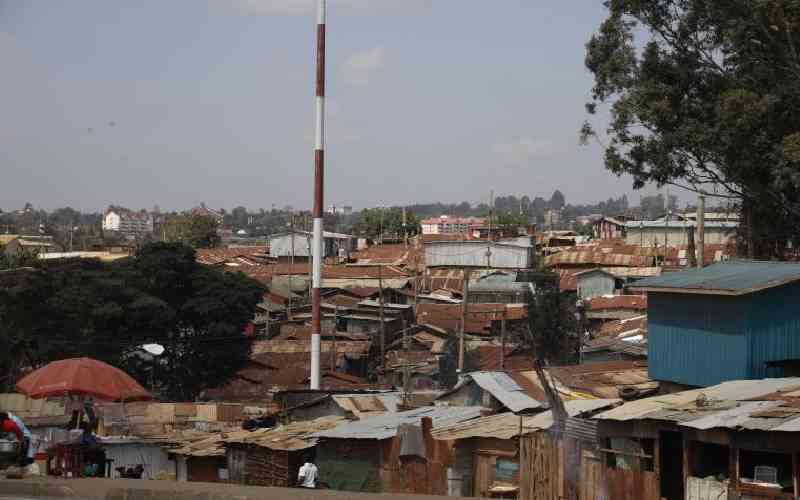Agriculture remains the lifeblood of Kenya’s economy and the most significant contributor to its gross domestic product (GDP). The sector contributes 25 per cent to GDP directly, and an additional 27 per indirectly through links with manufacturing, distribution and related activities.
The sector is the largest employers in the country, accounting for over 70 per cent of the total labour force, with one in five people in rural areas deriving their livelihoods from agriculture-related activities.
The Government has duly recognised the importance of agriculture by coming up with the Agricultural Sector Development Strategy 2010-2020 (ASDS), whose overall aim is to deliver strategic interventions that will make the sector a key driver in achieving the 10 per cent annual economic growth rate expected under Vision 2030.
But beyond the steps taken by the Government to make the sector a key economic driver, collective efforts must be put into increasing food security, reducing poverty and offering competitive opportunities for farmers, especially smallholders.
The systematic and prudent financing, marketing and expansion of smallholder agribusiness have been and continue to be a challenge in Kenya.
Smallholder farmers still experience innumerable challenges, including lack of access to reliable and timely data on market dynamics and prices, and the inability to access appropriate infrastructure, such as storage facilities, leading to post-harvest losses or low prices as a result of low-quality produce. Additionally, low financial literacy skills have hampered a business approach to the marketing of produce.
Poverty reduction
One way to counter these challenges is through the agricultural value chain.
Value chain development is increasingly becoming a popular approach worldwide to increase the incomes of small producers and the economically active poor.
Value chains are a key framework for understanding how inputs and services are brought together and then used to grow, transform or manufacture a product; how the product then moves physically to the customers; and how value increases along the way.
Taking a value chain approach to economic development and poverty reduction involves addressing the major constraints and opportunities faced by farmers and producers, processors, traders and other businesses at multiple points along the chain.
This will inevitably include a wide range of activities, such as ensuring access to the full range of necessary inputs, facilitating access to cheaper or better inputs, strengthening the delivery of business and financial services, enabling the flow of information and facilitating improved market access or increasing access to higher-value markets or value-added products.
The value chain perspective also provides an important means to gauge business-to-business relationships that connect the chain, thus increasing efficiency.
Access to adequate and timely financial services for all actors in the chain is a key element for success.
This implies that not only large producers and traders, but also small producers, need access to appropriate financial services to make optimal use of value addition and income generation.
Stay informed. Subscribe to our newsletter
Financial service providers must work closely with other stakeholders in the agricultural sector to find new ways to plug the holes in value chains by, for instance, choosing agribusiness as one of the key focus points in their growth strategies, with the emphasis being on smallholder farmers.
Financial needs
They must realise the need to finance the many rural producers, as well as small and mid-sized agribusinesses that remain under-served. Their financial needs are generally too large for microfinance, but too small for commercial banks. This gap hampers growth and limits agricultural development.
Inclusion of smallholder farmers is essential for agricultural growth and a vital ingredient in meeting the commercial and social objectives of all those involved in commodity markets. Greater efforts must be made to include these traders in the circle.
The writer is the director of business development at Chase Bank.
[email protected]
 The Standard Group Plc is a
multi-media organization with investments in media platforms spanning newspaper
print operations, television, radio broadcasting, digital and online services. The
Standard Group is recognized as a leading multi-media house in Kenya with a key
influence in matters of national and international interest.
The Standard Group Plc is a
multi-media organization with investments in media platforms spanning newspaper
print operations, television, radio broadcasting, digital and online services. The
Standard Group is recognized as a leading multi-media house in Kenya with a key
influence in matters of national and international interest.
 The Standard Group Plc is a
multi-media organization with investments in media platforms spanning newspaper
print operations, television, radio broadcasting, digital and online services. The
Standard Group is recognized as a leading multi-media house in Kenya with a key
influence in matters of national and international interest.
The Standard Group Plc is a
multi-media organization with investments in media platforms spanning newspaper
print operations, television, radio broadcasting, digital and online services. The
Standard Group is recognized as a leading multi-media house in Kenya with a key
influence in matters of national and international interest.








